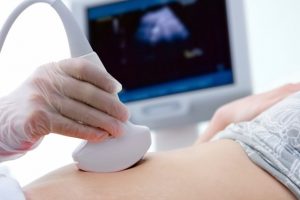Newly developed bioadhesive ultrasound helps in long-term continuous imaging of diverse organs

A wearable ultrasound device attached using a durable, adhesive, stretchy material enables continuous medical imaging of internal organs and tissues for patients on the go, researchers report. They tested their patch in real people doing activities like jogging and drinking fluids.
Ultrasonic imaging is one of the most widely used medical tools for noninvasive imaging of soft tissues and organs inside the body. Continuous or long-term ultrasound imaging over days to months could allow clinicians to monitor health status and observe disease progression, as well as lead to new insights into developmental biology.
However, in most cases, conventional ultrasound devices require close and continuous contact between a bulky and rigid transducer and the skin, making long-term internal observations difficult, particularly in patients that need to be mobile.
Although stretchable ultrasound imaging devices have improved wearability, they still suffer from limitations, including low imaging resolution, unstable image quality during body movement, short continuous imaging duration (~1 hour) and susceptibility to device failure.
Chonghe Wang and colleagues present the "BAUS" (bioadhesive ultrasound) patch – a device that could overcome many of these challenges. The BAUS device consists of a thin and rigid piezoelectric ultrasound transducer array, which is bonded to the skin with a durable, soft and bioadhesive hydrogel-elastomer, which allowed for more than 48 hours of robust adhesion to the skin while retaining its acoustic transmissivity.
Wang et al. demonstrated its ability to provide continuous imaging in vivo by monitoring carotid artery, lung and abdomen tissues using BAUS and a commercially available ultrasound platform under various environmental conditions and for different patient movements, including jogging and drinking fluids. In a related Perspective, Philip Tan and Nanshu Lu discuss the potential and limitations of the BAUS patch in greater detail.
American Association for the Advancement of Science
Wang, C., et al. (2022) Bioadhesive ultrasound for long-term continuous imaging of diverse organs. Science. doi.org/10.1126/science.abo2542.
Posted in: Device / Technology News | Medical Research News
Tags: Developmental Biology, Hydrogel, Imaging, in vivo, Medical Imaging, Skin, Ultrasound
Source: Read Full Article




